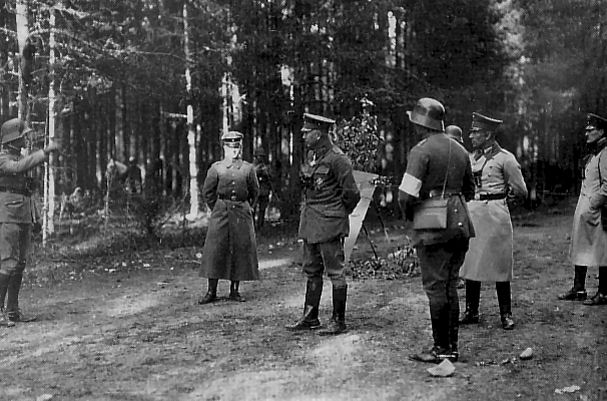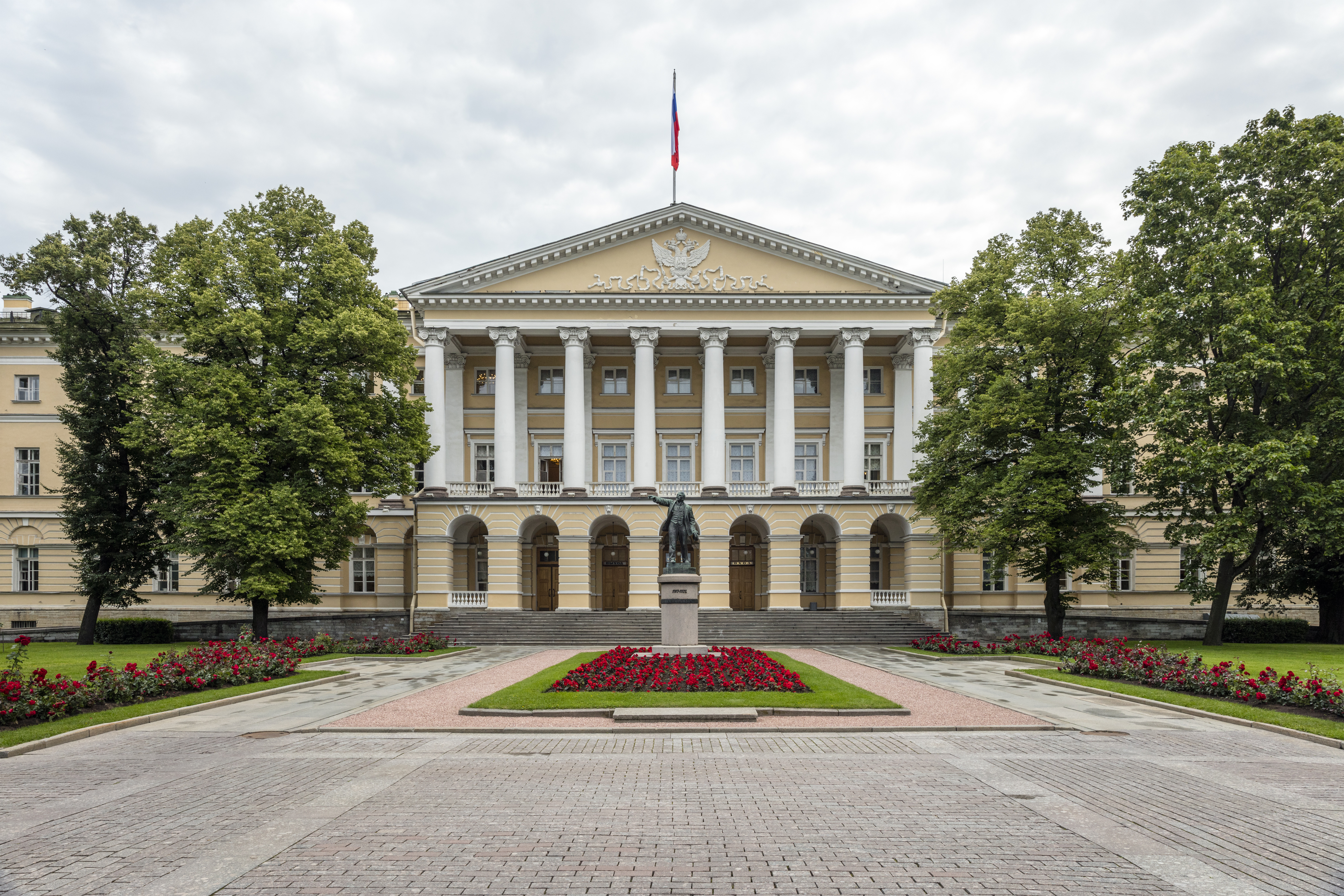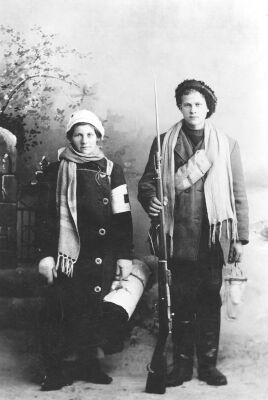|
Smolna, Helsinki
The Smolna is an Empire style building in the Kaartinkaupunki district of Helsinki, Finland. It is used as a banquet hall of the Cabinet of Finland and state visit meeting premises of the President and the Prime Minister. History The Smolna was completed in 1822 as the house of the inspector general of the Military of the Grand Duchy of Finland. In 1835 it was turned into the residence of the Governor-General of Finland. During the 1918 Finnish Civil War, the house served as the Red Guard headquarters and was nicknamed ″Smolna″, after the Bolshevik headquarters in the Smolny Institute of Saint Petersburg. After the Civil War, the nickname remained. The building was first the residence of the German general Rüdiger von der Goltz and the regent of Finland C. G. E. Mannerheim Baron Carl Gustaf Emil Mannerheim (, ; 4 June 1867 – 27 January 1951) was a Finland, Finnish military leader and statesman. He served as the military leader of the White Guard (Finl ... [...More Info...] [...Related Items...] OR: [Wikipedia] [Google] [Baidu] |
Eteläesplanadi
Esplanadi ( sv, Esplanaden), colloquially known as Espa, is an esplanade and urban park in downtown Helsinki, Finland, situated between the Erottaja square and the Market Square. It is bordered on its northern and southern sides by the Pohjoisesplanadi (''Norra Esplanaden'', North Esplanadi) and Eteläesplanadi (''Södra Esplanaden'', South Esplanadi) streets, respectively. Aleksanterinkatu runs parallel to Esplanadi. Esplanadi is well known as a popular walking area, and street performances are also often held in the park. Designed by the architect Carl Ludwig Engel, the park was originally opened in 1818. In 1827, Engels Teater (the predecessor of the Swedish Theatre), the first theatre building in Helsinki, also designed by Engel, was erected in a corner of the park. Centered in the park is a statue of Johan Ludvig Runeberg, the national poet of Finland, by his son Walter Runeberg. Other public art pieces include works by Viktor Jansson, Gunnar Finne and Lauri Leppänen. The ... [...More Info...] [...Related Items...] OR: [Wikipedia] [Google] [Baidu] |
Governor-General Of Finland
The governor-general of Finland ( fi, Suomen kenraalikuvernööri; sv, generalguvernör över Finland; russian: генерал-губернатор Финляндии) was the military commander and the highest administrator of Finland sporadically under Swedish rule in the 17th and 18th centuries and continuously in the autonomous Grand Duchy of Finland between 1809 and 1917. Swedish realm After the final abolition of the Duchy of Finland and related feudal privileges in the late 16th century, the king of Sweden sporadically granted most or all of Finland under a specially appointed governor-general, who took care of the matters in the eastern part of the country more or less according to his own best judgement. Best known of these officials is count Per Brahe whose reign is still referred to in Finland as the "count's days" (''kreivin aikaan''), meaning something positive that happens just in time. List of Swedish governors-general of Finland Translation in Grand Duchy ... [...More Info...] [...Related Items...] OR: [Wikipedia] [Google] [Baidu] |
Carl Ludvig Engel Buildings
Carl may refer to: *Carl, Georgia, city in USA *Carl, West Virginia, an unincorporated community * Carl (name), includes info about the name, variations of the name, and a list of people with the name *Carl², a TV series * "Carl", an episode of television series ''Aqua Teen Hunger Force'' * An informal nickname for a student or alum of Carleton College CARL may refer to: *Canadian Association of Research Libraries *Colorado Alliance of Research Libraries See also *Carle (other) *Charles *Carle, a surname *Karl (other) *Karle (other) Karle may refer to: Places * Karle (Svitavy District), a municipality and village in the Czech Republic * Karli, India, a town in Maharashtra, India ** Karla Caves, a complex of Buddhist cave shrines * Karle, Belgaum, a settlement in Belgaum ... {{disambig ja:カール zh:卡尔 ... [...More Info...] [...Related Items...] OR: [Wikipedia] [Google] [Baidu] |
Buildings And Structures In Helsinki
A building, or edifice, is an enclosed structure with a roof and walls standing more or less permanently in one place, such as a house or factory (although there's also portable buildings). Buildings come in a variety of sizes, shapes, and functions, and have been adapted throughout history for a wide number of factors, from building materials available, to weather conditions, land prices, ground conditions, specific uses, prestige, and aesthetic reasons. To better understand the term ''building'' compare the list of nonbuilding structures. Buildings serve several societal needs – primarily as shelter from weather, security, living space, privacy, to store belongings, and to comfortably live and work. A building as a shelter represents a physical division of the human habitat (a place of comfort and safety) and the ''outside'' (a place that at times may be harsh and harmful). Ever since the first cave paintings, buildings have also become objects or canvasses of much artist ... [...More Info...] [...Related Items...] OR: [Wikipedia] [Google] [Baidu] |
Rüdiger Von Der Goltz
Gustav Adolf Joachim Rüdiger Graf von der Goltz (8 December 1865 – 4 November 1946) was a German army general during the First World War. He commanded the Baltic Sea Division, which successfully intervened in the Finnish Civil War in the spring of 1918. Goltz stayed with his troops in Finland until December 1918 representing German interests, and in practice ruled the country as a military dictator during this period. After the Armistice of 11 November 1918, Goltz commanded the army of the local German-established government of Latvia, which in 1919 was instrumental in the defeat of the Russian Bolsheviks and their local allies in Latvia. The troops commanded by Goltz suffered a defeat against Estonia in 1919 and were eventually unsuccessful in retaining German control over Latvia and Estonia after World War I. Early life Born into Von der Goltz noble family in Züllichau, Brandenburg, he was the son of Count Gustav Albrecht von der Goltz (1831-1909) and his wife, Cä ... [...More Info...] [...Related Items...] OR: [Wikipedia] [Google] [Baidu] |
Saint Petersburg
Saint Petersburg ( rus, links=no, Санкт-Петербург, a=Ru-Sankt Peterburg Leningrad Petrograd Piter.ogg, r=Sankt-Peterburg, p=ˈsankt pʲɪtʲɪrˈburk), formerly known as Petrograd (1914–1924) and later Leningrad (1924–1991), is the List of cities and towns in Russia by population, second-largest city in Russia. It is situated on the Neva River, at the head of the Gulf of Finland on the Baltic Sea, with a population of roughly 5.4 million residents. Saint Petersburg is the List of European cities by population within city limits, fourth-most populous city in Europe after Istanbul, Moscow and London, the List of cities and towns around the Baltic Sea, most populous city on the Baltic Sea, and the world's List of northernmost items#Cities and settlements, northernmost city of more than 1 million residents. As Russia's Imperial capital, and a Ports of the Baltic Sea, historically strategic port, it is governed as a Federal cities of Russia, federal city. ... [...More Info...] [...Related Items...] OR: [Wikipedia] [Google] [Baidu] |
Smolny Institute
The Smolny Institute (russian: Смольный институт, ''Smol'niy institut'') is a Palladian edifice in Saint Petersburg that has played a major part in the history of Russia. History The building was commissioned from Giacomo Quarenghi by the Society for Education of Noble Maidens and constructed in 1806–08 to house the Smolny Institute of Noble Maidens, established at the urging of Ivan Betskoy and in accordance with a decree of Catherine II (the Great) in 1764, borrowing its name from the nearby Smolny Convent. The establishment of the institute was a significant step in making education available for females in Russia: "The provision of formal education for women began only in 1764 and 1765, when Catherine II established first the Smolny Institute for girls of the nobility in Saint Petersburg and then the Novodevichii Institute for the daughters of commoners." The Smolny was Russia's first educational establishment for women and continued to function und ... [...More Info...] [...Related Items...] OR: [Wikipedia] [Google] [Baidu] |
Red Guards (Finland)
sv, Röda gardet , war=the Russian Revolution of 1905 and Finnish Civil War , image= , caption= A Red Guard fighter (right) and a nurse (left) in 1918 , active= 1905–19071917–1920 , ideology= Socialism,Communism,Left-wing nationalism , leaders= Johan Kock Ali AaltonenEero Haapalainen Eino Rahja Kullervo MannerOtto Wille Kuusinen , clans= , headquarters= , area= Finland (FSWR), East Karelia , size= , partof= , predecessor= , successor= , allegiance= Finnish Socialist Workers' Republic , allies= Russian Red Guards , opponents= (1905–1907) * Protection Corps (1905–1906) Finland (1918) * White Guards (1917–1920) (1918) , battles= *Russian Revolution of 1905 *Finnish Civil War *Estonian War of Independence * Kinship Wars The Red Guards ( fi, Punakaarti, ; sv, Röda gardet) were the paramilitary units of the Finnish labour movement in the early 1900s. The first Red Guards were established during the 1905 general strike, but disbanded a year later. After the Rus ... [...More Info...] [...Related Items...] OR: [Wikipedia] [Google] [Baidu] |
Finnish Civil War
The Finnish Civil War; . Other designations: Brethren War, Citizen War, Class War, Freedom War, Red Rebellion and Revolution, . According to 1,005 interviews done by the newspaper '' Aamulehti'', the most popular names were as follows: Civil War 29%, Citizen War 25%, Class War 13%, Freedom War 11%, Red Rebellion 5%, Revolution 1%, other name 2% and no answer 14%, was a civil war in Finland in 1918 fought for the leadership and control of the country between White Finland and the Finnish Socialist Workers' Republic (Red Finland) during the country's transition from a grand duchy of the Russian Empire to an independent state. The clashes took place in the context of the national, political, and social turmoil caused by World War I ( Eastern Front) in Europe. The war was fought between the "Reds", led by a section of the Social Democratic Party, and the "Whites", conducted by the conservative-based senate and the German Imperial Army. The paramilitary Red Guards, which ... [...More Info...] [...Related Items...] OR: [Wikipedia] [Google] [Baidu] |
Military Of The Grand Duchy Of Finland
Between 1809 and 1917 Finland was an autonomous part of the Russian Empire as the Grand Duchy of Finland. Between 1881 and 1901 the Grand Duchy had its own army. Before that several other military units had also been formed. The Grand Duchy inherited its allotment system ( Finnish: ''ruotujakolaitos'', Swedish: ''indelningsverket'') from the Swedish military organization. However, for several decades, Russian rulers did not require military service from Finland – operations and defence were mostly taken care by Russian troops based in the Grand Duchy. As a result, officer benefits of the allotment system became practically pensions, as payment was based on passive availability, not on actual service. The Diet of Finland made a pact with Tsar Alexander I; Finland paid a tax to Russia as compensation and military service was not called. This lasted until the Crimean War, 1854, during and after which Finland set up some sharpshooter battalions based on rote system. Napoleonic wa ... [...More Info...] [...Related Items...] OR: [Wikipedia] [Google] [Baidu] |
Helsinki
Helsinki ( or ; ; sv, Helsingfors, ) is the Capital city, capital, primate city, primate, and List of cities and towns in Finland, most populous city of Finland. Located on the shore of the Gulf of Finland, it is the seat of the region of Uusimaa in southern Finland, and has a population of . The Helsinki urban area, city's urban area has a population of , making it by far the List of urban areas in Finland by population, most populous urban area in Finland as well as the country's most important center for politics, education, finance, culture, and research; while Tampere in the Pirkanmaa region, located to the north from Helsinki, is the second largest urban area in Finland. Helsinki is located north of Tallinn, Estonia, east of Stockholm, Sweden, and west of Saint Petersburg, Russia. It has History of Helsinki, close historical ties with these three cities. Together with the cities of Espoo, Vantaa, and Kauniainen (and surrounding commuter towns, including the eastern ... [...More Info...] [...Related Items...] OR: [Wikipedia] [Google] [Baidu] |
Prime Minister Of Finland
The prime minister of Finland ( fi, Suomen pääministeri; ) is the leader of the Finnish Government. The prime minister and their cabinet exercise executive authority in the state. The prime minister is formally ranked third in the protocol after the president of Finland and the speaker of the Parliament. Finland's first prime minister, Pehr Evind Svinhufvud (also later the 3rd president of the Finland), was appointed on 27 November 1917, just a few days before the country declared independence from Russia. The incumbent prime minister is Sanna Marin of the Social Democratic Party. Marin was sworn in on 10 December 2019 and at 34, she became the world's youngest serving state leader and the youngest prime minister in Finland's history. History In 1918, the Senate of Finland was transformed into the Government of Finland, and the position of vice-chairman of the Economic Division was transformed into that of the prime minister. Kesäranta, located in the westerly ... [...More Info...] [...Related Items...] OR: [Wikipedia] [Google] [Baidu] |






.jpg)
